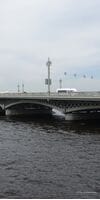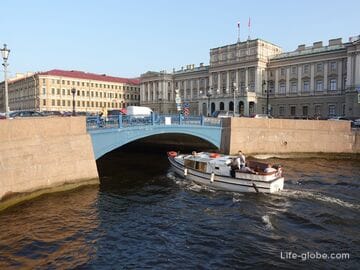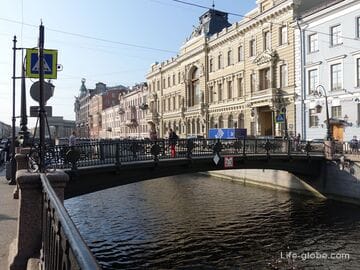The Blagoveshchensky Bridge is one of the bridges across the Neva River in St. Petersburg.
The Blagoveshchensky Bridge is one of the most beautiful and longest bridges in St. Petersburg. This bridge was also the first permanent crossing over the Neva River.
The popularity of the bridge is also given by the fact that the Blagoveshchensky Bridge is a drawbridge.
The Blagoveshchensky Bridge is located in the center of St. Petersburg, it connects Vasilyevsky and 2nd Admiralty (English Embankment) islands.
Upstream from the Blagoveshchensky Bridge is the most famous bridge of the city - The Palace Bridge.
The total length of the Blagoveshchensky Bridge is 349.8 meters, and its width is 38.7 meters. The bridge consists of 8 spans.
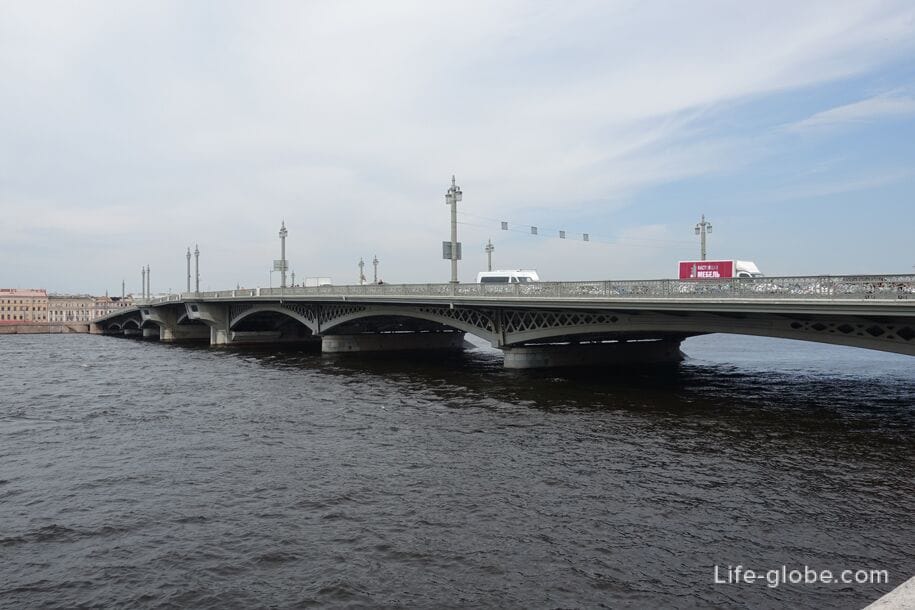

There are cast-iron railings on the bridge, created according to the drawing of the architect Alexander Bryullov. The main motif of the bridge fence is the mythological sea horses with fish tails.
The bridge is also decorated with lanterns.

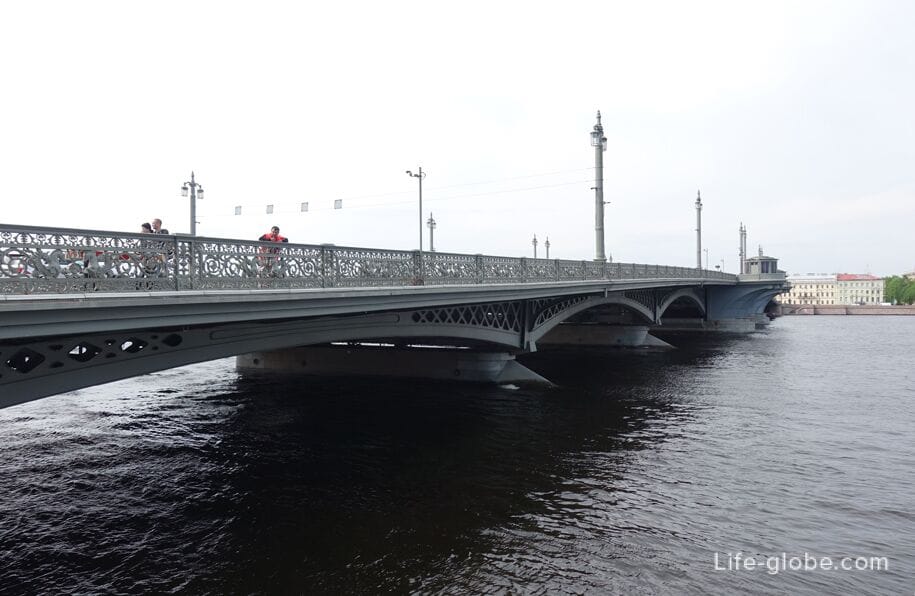
The bridge is a roadway and pedestrian.
The central part of the bridge is passing in both directions.
Pedestrian sidewalks run along both sides of the bridge.

At the Blagoveshchensky Bridge, on the side of the English Embankment (2nd Admiralty Island), there is a passenger terminal "English Embankment".
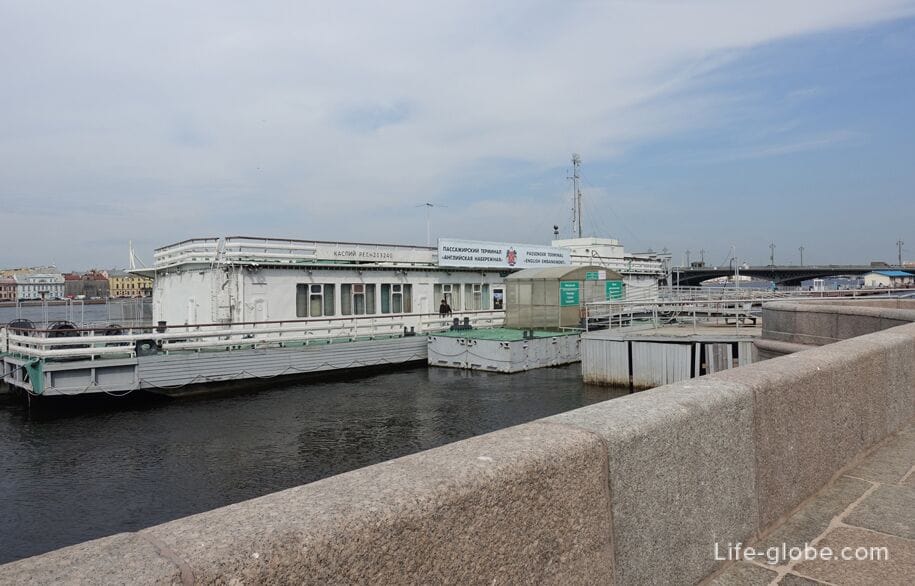
Divorce of the Blagoveshchensky bridge
One of the most popular sights in St. Petersburg is the divorce of bridges.
In total, 9 bridges are regularly built in the city, and three more-according to preliminary applications.
Bridges in St. Petersburg are built regularly, annually - from April to November, at night.
The Blagoveshchensky Bridge is being built third, after the Palace and Troitsky Bridges.
At the Blagoveshchensky Bridge, a central double-wing span is being built.
The wiring is carried out using the latest hydraulic system. The pavilions for mechanics are located directly on the surface of the bridge. Read more about the divorce of all bridges in St. Petersburg (with photos)…
The time of the bridges may change. We recommend checking the exact time of the bridges in St. Petersburg, including the Blagoveshchensk Bridge, on the official website: mostotrest-spb.
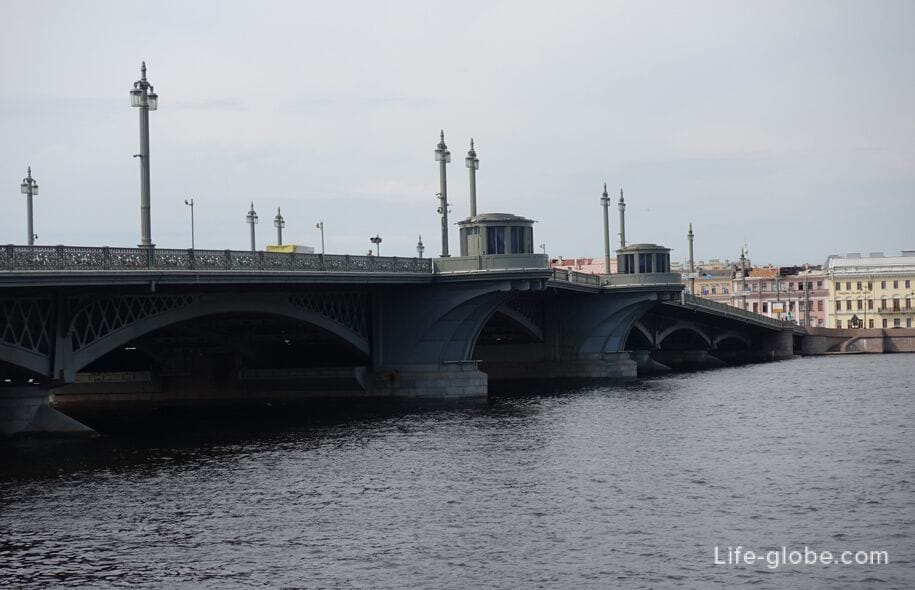
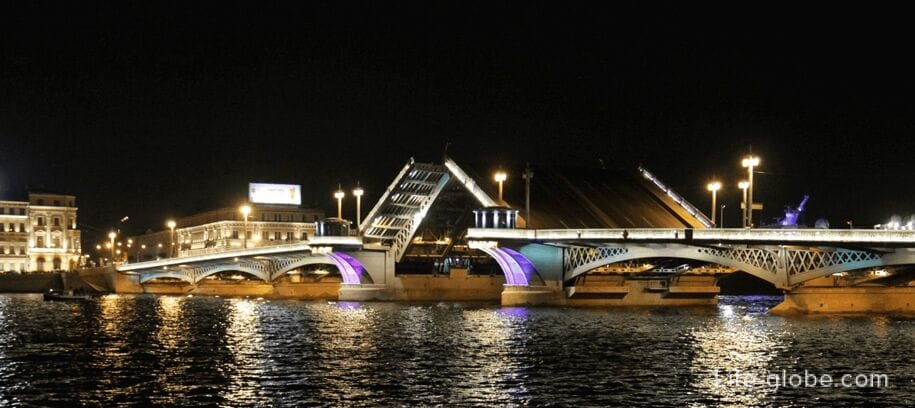
Views from the Blagoveshchensk Bridge
The Blagoveshchensky Bridge offers beautiful panoramic views, including the Neva River, the English Embankment, the embankments of Vasilievsky Island (University and Lieutenant Schmidt) and the Palace Bridge.
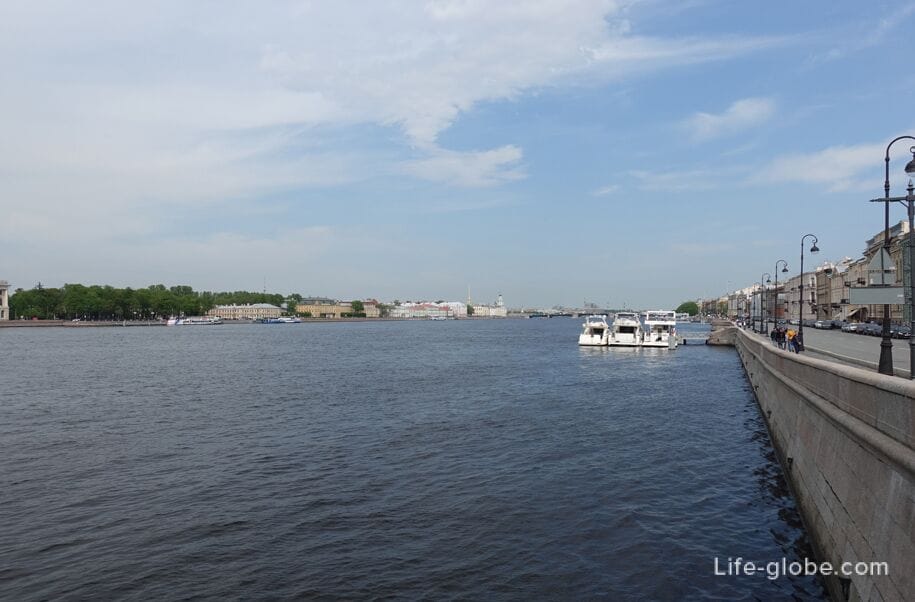
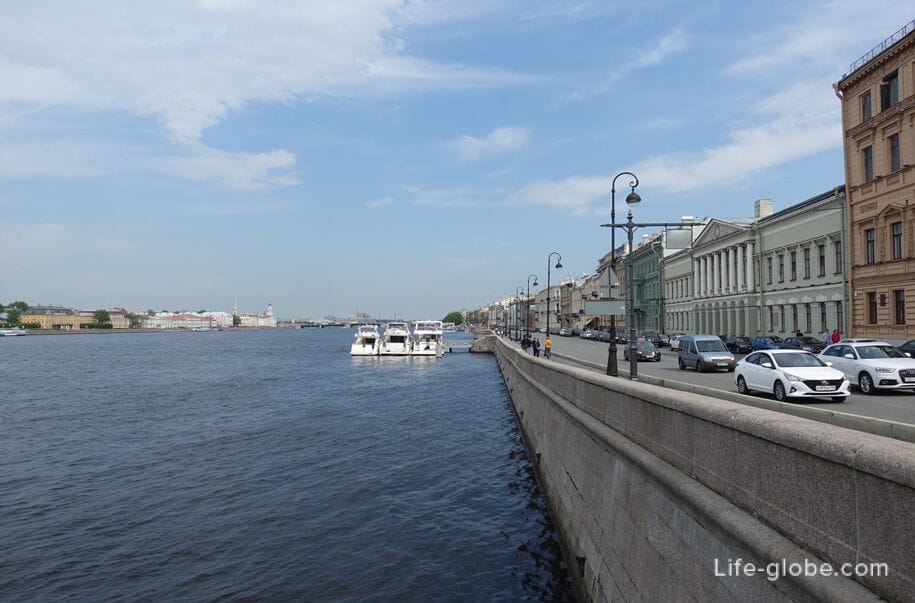
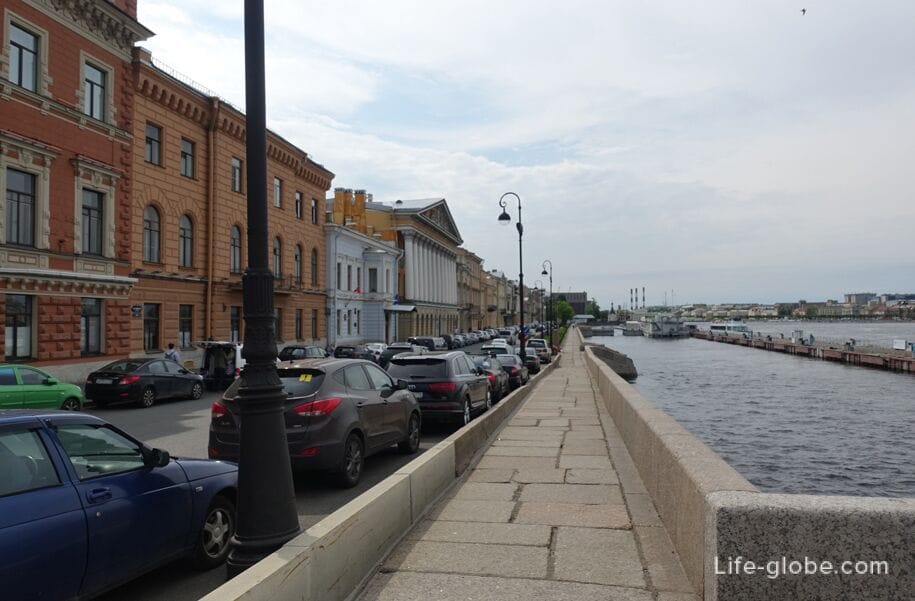
The history of the Blagoveshchensky Bridge
Initially, floating or flat - bed bridges ran across the Neva-temporary structures made of wooden barges-flat-bed bridges.
The laying of the first permanent metal bridge in Russia (Blagoveshchensk) took place on January 1, 1843. The bridge project was developed by engineer Stanislav Kerbedz and approved by Emperor Nicholas I. The piles and bank abutments of the bridge were deepened into the river bottom by ten meters. The work under water was carried out with the help of air bells.
The grand opening of the bridge took place on November 21, 1850. The opening ceremony was attended by Emperor Nicholas I with his family and entourage.
The name" Blagoveshchensky", the bridge was named after the church of the Horse Guards Regiment and Blagoveshchenskaya Square.
Initially, the drawbridge span was located on the right bank of the Neva River. With the help of a mechanism, two wings were moved apart in a horizontal plane, parallel to the surface of the water. The wiring took about 40 minutes.
Also at that time, the Annunciation Bridge was the longest in Europe - its length was about 300 meters.
Already in the second half of the 19th century, the drawbridge span became narrow for large ocean-going vessels. In 1936-1938, the bridge was rebuilt according to the project of engineer Grigory Perederia; at the same time, the middle span with two wings - an all-welded metal superstructure-became movable. It was one of the first all-welded bridges in Russia.
In 1975-1976, according to the project of engineers of the Leningrad Engineering Project, the bridge was overhauled. The wooden flooring of the draw span was replaced with a metal one.
Another major reconstruction of the bridge took place in 2005-2007. During the work, the architectural appearance of the bridge was as close as possible to the one that existed in the 19th century, the draw span was also significantly increased, the bridge itself became wider and tram tracks were removed from it, and the hydraulic wiring system made the lifting of the bridge wings fast and smooth.
During the history of the bridge, it has also had other names. So, after the death of the emperor in 1855, the bridge was renamed Nikolaevsky. In 1918, the bridge was named after Lieutenant Peter Schmidt, who led the uprising on the cruiser Ochakov in the first Russian Revolution - Lieutenant Schmidt Bridge. The historical name "Blagoveshchensky" was returned to the bridge only on August 15, 2007.
Interesting facts about the Blagoveshchensk Bridge
In 1917, the cruiser Aurora was standing behind the bridge, from where a blank shot was fired, which became the signal for the storming of the Winter Palace.
During the overhaul of 2005-2007, a bridge was built for automobile and pedestrian traffic between the Central District and Vasilievsky Island upstream of the Neva, which was popularly called "the son of Lieutenant Schmidt".
According to legend, during the first construction of the bridge, Nicholas I promised the architect Kerbedz, according to the rank-for each built span of the bridge. After hearing this, the bridge project was completely redesigned and an additional 5 spans appeared at the crossing.

Practical information
Coordinates of the Blagoveshchensk Bridge: 59°56'04.0"N 30°17'22.0"E (59.934444, 30.289444).
All accommodation facilities in St. Petersburg, including in the city center and more remotely from it, can be viewed and booked here




